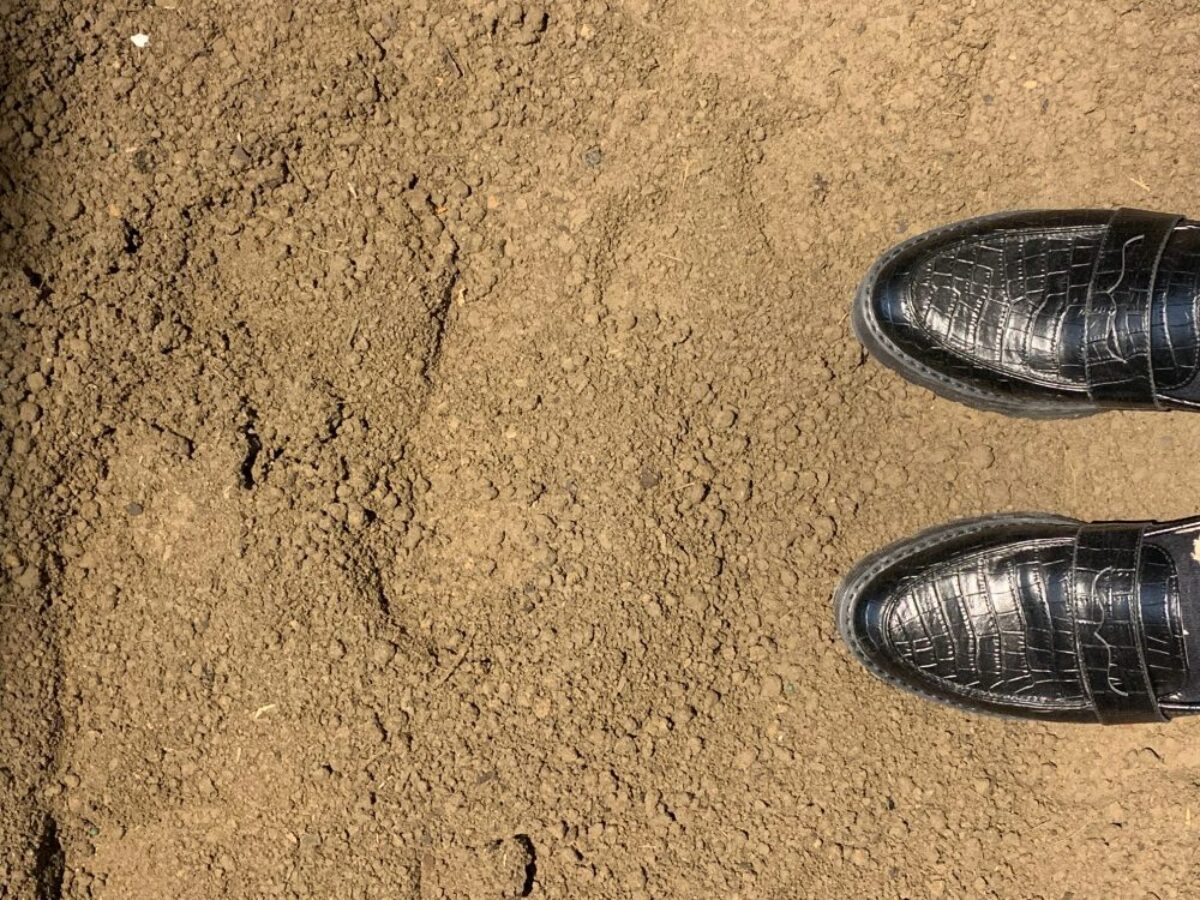Four large white plastic bags neatly line CAM’s loading dock. Each bag is tightly packed with dirt. Earthy scents fill the air. Outside, a forklift slowly moves another white bag from a flatbed truck and places it against the museum’s outer walls. A member of CAM’s install crew pushes a dolly to the edge of the loading dock, lifts a skid that supports one bag, and sets it in a back storage space.
The install crew is preparing for Derek Fordjour’s first solo museum exhibition, SHELTER. The immersive installation is a seemingly ramshackle structure with corrugated metal walls and a four-inch dirt floor. The walls are populated by the artist’s colorful, muti-textured paintings, and sculptures are placed along the dirt footpaths. Visitors are invited to walk inside the installation along the packed dirt floor. Rain patters on the tin roof, with noises building like a gathering storm. Although the installation appears to be a precarious shack, behind the rusting walls are high-tech mechanisms, ninety-one solenoids are precisely placed to rattle the shelter.
Over two days, 22,000 pounds of treated dirt are brought into CAM, each bag containing over 2,000 pounds of material. Before entering the museum, St. Louis Composting coordinated with Rottler Pest & Lawn Solutions to rid the soil of rocks and bugs. CAM registrar Jen Nugent went through a lengthy process to find the specific dirt appropriate for SHELTER. “We looked at theater productions, infield suppliers, art galleries, and organic artificial soils,” Nugent says. “We needed a dirt that could not easily be spread around, that was heavy but not too humid.” Throughout the process, she sent various samples of dirt to Fordjour for his approval. Eventually the two decided on dirt with a rich dark color, slightly damp and smooth.
This is not the first time CAM engaged in heavy lifting to put artwork into place. A year ago, Christine Corday’s RELATIVE POINTS featured sculptures fashioned from compressed metalloid grit. Nugent describes the installation of Corday’s dense objects as a choreographed dance of forklifts. “After bringing in twelve, 10,000 pound sculptures,” Nugent says, “22,000 pounds of dirt is easy.”
—Alli Beard
